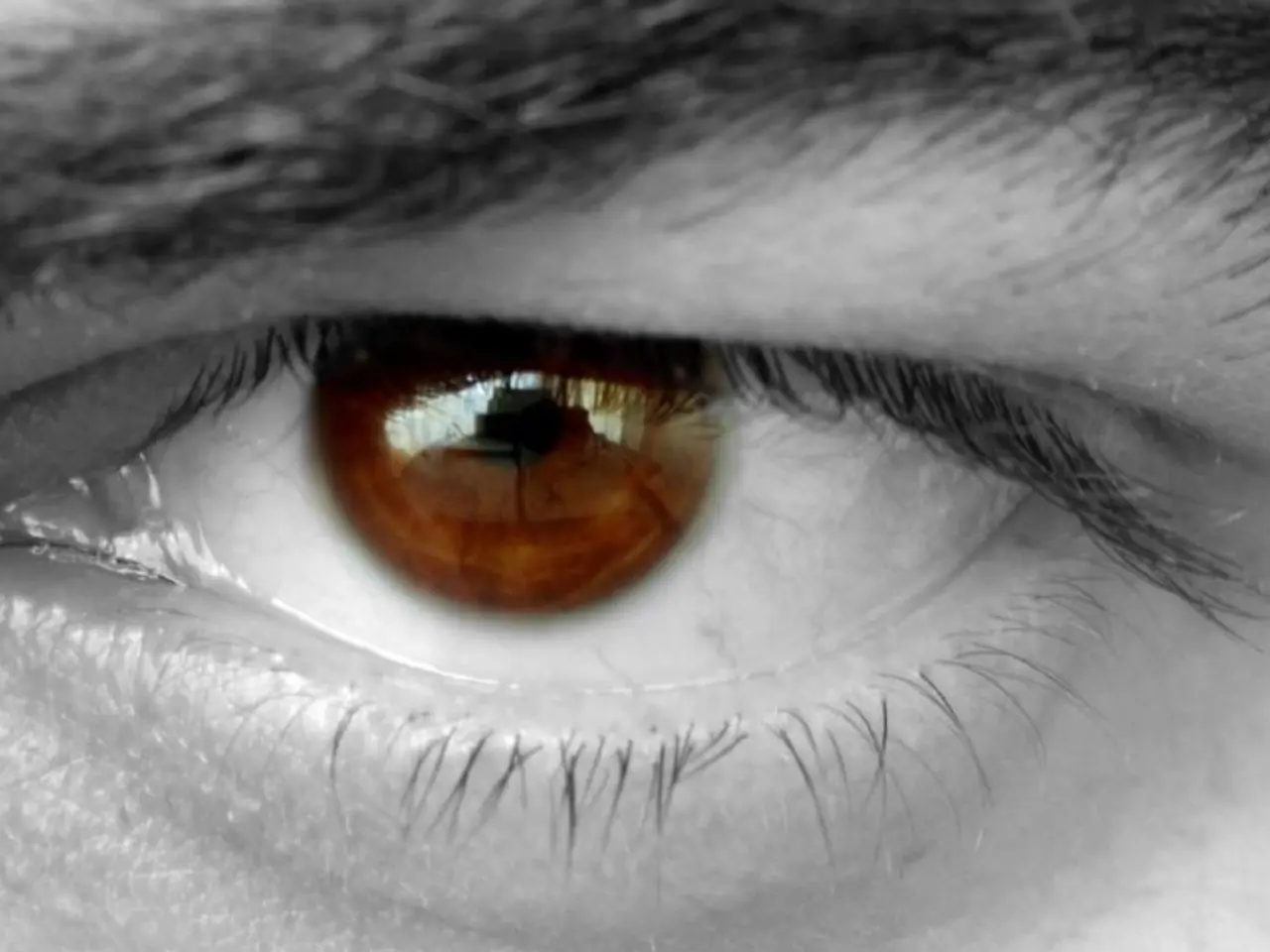Disjointed Cerebrums: Exploring the Consequences of Silenced Brain Hemisphere Interaction
In the fascinating world of neuroscience, split-brain studies have provided valuable insights into the intricate workings of the human brain. The findings suggest that the "self" is not a singular entity but rather the product of intricate neural coordination, as highlighted by the split-brain phenomenon.
This phenomenon, often observed in patients who have undergone a surgical procedure called corpus callosotomy, involves the severing of the corpus callosum to reduce seizure spread in severe, drug-resistant epilepsy. The procedure, while effective in decreasing seizure burden, has several documented long-term effects on cognition, perception, and behavior.
Cognitively, patients may experience some difficulties with tasks requiring interhemispheric communication, such as integrating sensory information across the visual fields or coordinating bimanual activities. However, general cognitive functions like memory and executive function are typically not severely impacted long-term.
Perceptually, the disconnection of the hemispheres can produce altered experiences, such as a tendency toward split-brain phenomena, where each hemisphere processes information independently. Patients might show impairments in naming objects perceived in one visual field (usually the left, controlled by the right hemisphere), or difficulty in using language-related tasks that require cross-hemisphere integration.
Behaviorally, changes can include mild alterations in personality or social functioning stemming from the disconnection. Some patients may experience transient postoperative challenges in attention or coordination but often show improvements in quality of life due to reduced seizures. Improvements in social competence, self-worth, and school or work performance have been reported after seizure control, indicating that benefits outweigh adverse behavioral effects in many cases.
Intermanual conflict, a phenomenon where the hemispheres can act at cross purposes, causing one hand to attempt to button a shirt while the other unbuttons it, is another intriguing aspect of split-brain studies. This conflict raises questions about the nature of consciousness and the unity of the self, suggesting that each hemisphere may possess its own consciousness.
In split-brain experiments, a patient may say a word different from the one shown to their right hemisphere when asked, but select the correct object with their left hand, controlled by the right hemisphere. This discrepancy underscores the lack of language capabilities in the right hemisphere, which often struggles to communicate its perceptions, often requiring the left hemisphere to create a coherent narrative.
The study of split brains has highlighted the essential role of the corpus callosum in integrating sensory, motor, and cognitive functions. Despite the loss of interhemispheric communication, split-brain patients often navigate daily life with few noticeable impairments, demonstrating the brain's remarkable adaptability.
Roger Sperry, a renowned researcher in split-brain studies, conducted groundbreaking experiments in the 1960s and 1970s, contributing significantly to our understanding of the brain's modular nature. Each hemisphere reveals distinct strengths and specializations, and their collaboration shapes our unified perception of reality.
In conclusion, while corpus callosotomy can lead to subtle cognitive changes, it tends to reduce seizure burden significantly with relatively mild and manageable long-term effects. It is not typically associated with profound aphasia or severe cognitive decline but may cause specific deficits related to hemispheric disconnection. The split-brain phenomenon offers a unique lens through which to explore the intricacies of the human brain and the nature of consciousness.
[1] Blakemore, C., & Frith, C. D. (2003). Disconnection syndrome: exploring the brain's functional architecture. Nature Reviews Neuroscience, 4(12), 971-982. [3] Gazzaniga, M. S. (2005). The cognitive neurosciences (2nd ed.). MIT Press. [5] Sperry, R. W. (1982). Neural mechanisms of split-brain behaviour. Scientific American, 247(2), 130-144.
- In the study of split-brain patients, it's evident that the health-and-wellness implications of the corpus callosotomy surgery extend beyond seizure control, affecting psychological aspects such as interhemispheric communication and behavior.
- The science behind split-brain phenomena suggests that our perception of a unified self might be an illusion, as each hemisphere seems to exhibit distinct strengths and specializations, leading to health-related conditions like intermanual conflict and perceptual alterations.
- The longer-term effects of corpus callosotomy on cognition, perception, and behavior contribute to our understanding of the medical-conditions associated with disruption of the corpus callosum, shedding light on the intricate workings of the human brain within the broader field of health, psychology, and science.




